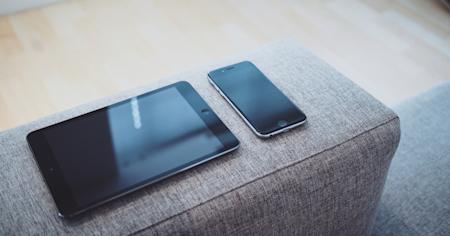For IT teams and support professionals, being able to remotely access and view an end-user’s iPhone from an iPad can be incredibly useful for troubleshooting issues, providing guidance, and ensuring efficient support. While iOS devices don’t allow full remote control, Splashtop enables IT technicians to securely view the iPhone’s screen in real-time, making it easier to diagnose and resolve problems.
With Splashtop, IT professionals can now provide remote support directly from an iPad, offering flexibility to assist end-users from anywhere. In this guide, we’ll cover the prerequisites, setup process, security considerations, and how to use Splashtop to seamlessly access and view an iPhone’s screen from an iPad.
Prerequisites for Remotely Accessing an End-User’s iPhone from an iPad
Before setting up remote access to an end-user’s iPhone from an iPad for remote support, ensure the following requirements are met:
1. Compatible Devices and Software
Both the iPhone (end-user’s device) and iPad (technician’s device) should be running a recent iOS version to ensure compatibility with remote access tools. Some features may not be available on older models or outdated software.
2. Reliable Internet Connection
Since remote access relies on internet connectivity, both devices must be connected to a stable Wi-Fi network or a strong cellular signal to avoid lag or disconnections during the session.
3. Screen Sharing Permissions on the End-User’s iPhone
iOS devices restrict full remote control, but screen sharing is possible with Splashtop. The end-user will need to enable screen recording and broadcast permissions on their iPhone to share their screen with the technician’s iPad.
4. Secure Access and Privacy
To maintain security while remotely accessing an end-user’s iPhone:
Use trusted remote access software like Splashtop, which provides encryption and secure connections.
Ensure the end-user is on a private and secure network to minimize security risks.
Verify that the app complies with Apple’s privacy policies to protect user data.
5. Session-Based Access for Security
Since full remote control of an iPhone is not possible, Splashtop uses a session-based approach where the end-user manually starts a session. The end-user must generate a session code from the Splashtop SOS app and provide it to the technician before screen sharing begins.
By meeting these prerequisites, IT technicians can efficiently support end-users from anywhere—even using just an iPad. In the next section, we’ll go through the step-by-step process of setting up remote access using Splashtop.
7 Simple Steps to Set Up Remote Access from an iPad to an End-User’s iPhone
Providing remote support for an end-user’s iPhone from an iPad with Splashtop is simple and efficient. Whether you’re assisting an employee, customer, or client, you can guide them through troubleshooting steps by viewing their iPhone screen in real time. Follow these steps to get started.
Step 1: Instruct the End-User to Install the Splashtop SOS App
To begin, the person receiving support must install the necessary Splashtop app:
Instruct the end-user to download and install the Splashtop SOS app from the App Store on their iPhone.
On your iPad (technician’s device), install the Splashtop Business app.
Step 2: Ask the End-User to Open the Splashtop SOS App
Once the Splashtop SOS app is installed, the end-user must launch the app on their iPhone. The app will generate a session code, which they need to share with you (the technician) to initiate the remote session.
Step 3: Guide the End-User to Enable Screen Sharing
Since iOS does not allow full remote control, the end-user must manually enable screen sharing for you to view their screen:
Ask them to open the Control Center on their iPhone:
iPhones with a Home button: Swipe up from the bottom of the screen.
iPhones without a Home button: Swipe down from the top-right corner.
Instruct them to press and hold the Screen Recording button.
Have them select Splashtop SOS from the list and tap Start Broadcast.
Step 4: Enter the Session Code on Your iPad
On your iPad, open the Splashtop Business app and follow these steps:
Tap the SOS icon to open the connection screen.
Enter the 9-digit session code provided by the end-user.
Tap Connect to start the session.
Step 5: View the End-User’s iPhone Screen on Your iPad
Once connected, you will be able to see the iPhone’s screen in real time on your iPad. While iOS does not allow direct control, you can guide the user through troubleshooting steps, identify issues, and provide clear instructions remotely.
Step 6: Use the Viewing Controls for Better Support
During the session, you can:
Rotate the screen (Clockwise) for a better view.
Adjust display size (Scaled or Original size).
Enter Full Screen Mode for a more immersive experience.
Take screenshots to document issues or provide visual guidance.
Step 7: Instruct the End-User to Disconnect the Session
Once the support session is complete, ensure the connection is properly closed:
Ask the end-user to reopen the Splashtop SOS app.
Instruct them to tap Disconnect to end the session and stop the screen broadcast.
IT technicians don’t typically provide remote support from an iPad, but thanks to Splashtop, you can now assist end-users from anywhere—even without a computer. With these simple steps, you can efficiently troubleshoot iPhone issues from your iPad, helping users resolve problems quickly and effortlessly.
In the next section, we’ll go over best practices to ensure secure and safe remote access for every session.
Security Considerations for Safe Remote Access Between an iPad and an End-User’s iPhone
When providing remote support for an end-user’s iPhone from an iPad, security should always be a priority. Ensuring a secure and controlled connection helps protect both the IT technician and the end-user from potential vulnerabilities. Follow these best practices for safe and secure remote access.
Use Trusted Remote Access Software
Only use reputable and verified remote access software like Splashtop, which provides secure, encrypted connections.
Ensure the software complies with Apple’s security policies and does not require risky configurations like jailbreaking.
Secure the Internet Connection
Ask the end-user to connect to a private, encrypted Wi-Fi network instead of public Wi-Fi to minimize security risks.
If using cellular data, confirm that the connection is protected with end-to-end encryption to prevent unauthorized access.
Enable Two-Factor Authentication (2FA)
If available, enable 2FA on your remote access account to add an extra layer of security.
Use strong, unique passwords to prevent unauthorized logins.
Monitor and Approve Connections Manually
Do not use always-on remote access—instead, require the end-user to manually approve each session by sharing a one-time session code.
Be cautious of unexpected connection requests and verify their legitimacy before accepting.
Keep Devices and Apps Updated
Ensure that both the technician’s iPad and the end-user’s iPhone are running the latest iOS version to benefit from security updates.
Keep the Splashtop SOS and Splashtop Business apps updated to maintain compatibility and security.
Verify Permissions and Access Logs
Review app permissions and only grant access to the necessary features, such as screen sharing.
If your remote access tool provides session logs, check them periodically to detect any unusual activity.
Ensure the Session is Properly Disconnected
Once the support session is complete, instruct the end-user to manually disconnect the session in the Splashtop SOS app to prevent unauthorized viewing.
Close the Splashtop Business app on your iPad to ensure no active sessions remain in the background.
Securely Access an iPhone from an iPad with Splashtop
Splashtop makes it easy for IT technicians and support professionals to remotely access and view an end-user’s iPhone screen from an iPad, enabling seamless real-time remote support. Whether you’re troubleshooting a technical issue, guiding an employee through a setup process, or assisting a customer with their device, Splashtop provides a secure, reliable, and hassle-free solution—even when using just an iPad.
Why Choose Splashtop for Remote iPhone Support?
Quick & Easy Setup – The end-user simply installs the Splashtop SOS app on their iPhone and provides the session code, allowing you to connect instantly from the Splashtop Business app on your iPad.
Secure & Encrypted Connection – Splashtop uses enterprise-grade encryption to ensure all remote support sessions remain private and protected.
Real-Time Screen Viewing – Experience smooth, low-latency screen mirroring, making it easy to diagnose issues and guide users through troubleshooting.
Trusted by IT Professionals & Support Teams – Splashtop is an award-winning remote support solution used by IT teams, MSPs, and businesses worldwide for fast, effective iPhone assistance.
Try Splashtop for Free
Ready to enhance your remote access and support capabilities? Sign up for a free trial of Splashtop today and experience how effortless it is to provide remote iPhone support from an iPad.


